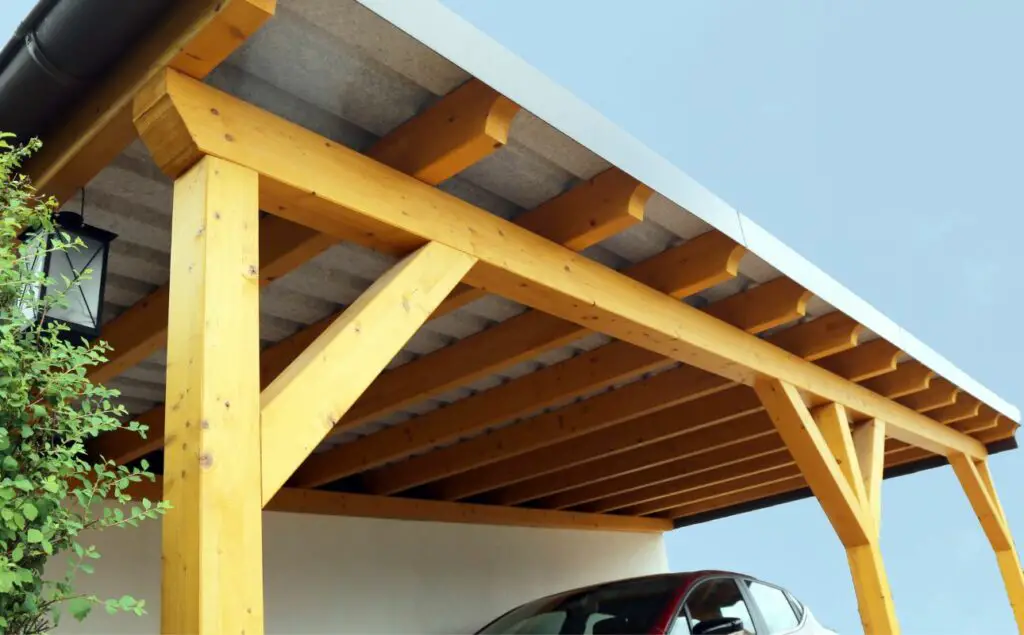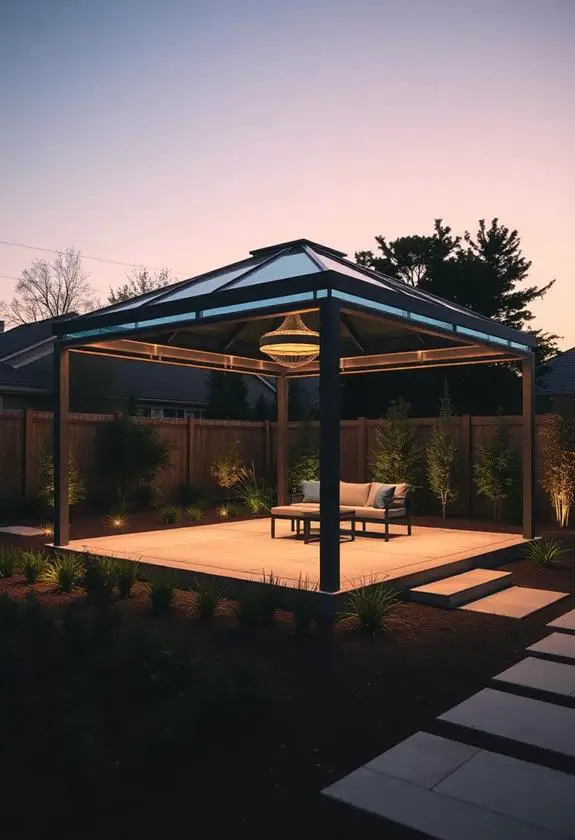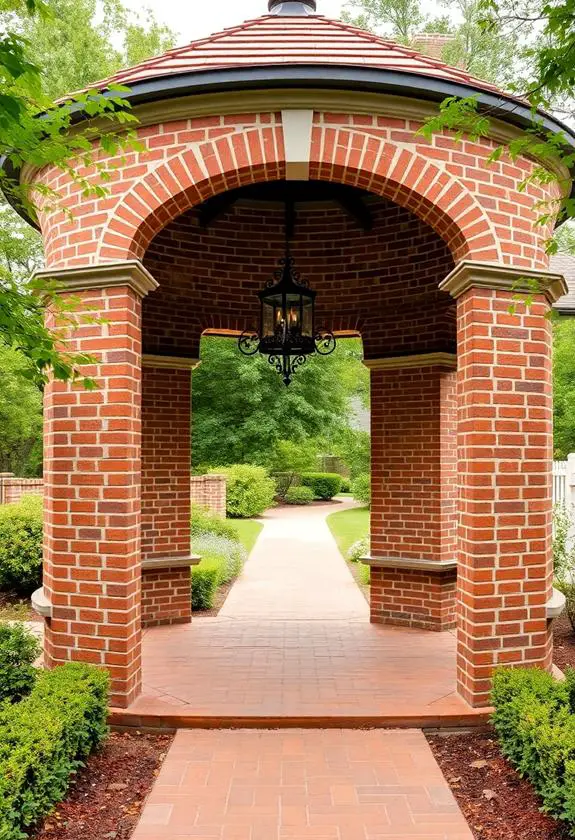While garages provide complete protection from the weather and potential theft, carports offer a more affordable and flexible option.
The primary purpose of a carport is to provide shelter for vehicles against harsh weather conditions such as rain, hail, snow, and excessive sun exposure.
Car owners also use them to protect their vehicles from bird droppings or other debris that could cause damage. But do carports protect cars as effectively as garages?
This article will explore the purpose of carports, the different types available, their level of protection provided, and additional measures that can be taken to increase protection.

The Purpose of Carports
Carports serve several purposes that make them a valuable addition to any property. They’re often seen as a cost-effective alternative to a fully enclosed garage, providing similar benefits. Here are the primary purposes of carports:
- Vehicle Protection
Carports shield cars, motorcycles, boats, and other vehicles from rain, snow, hail, and strong sunlight that can damage the vehicle’s exterior and interior over time. They also protect vehicles from falling debris like leaves or tree branches.
- Additional Storage Space
Carports can also serve as storage space. Besides parking cars, they can be used to store bikes, garden equipment, tools, or other items that might not fit in a garage or house.
- Shade and Outdoor Space
A carport provides a shaded area that can be used for various outdoor activities. Some people use their carport as a covered patio for picnics, barbecues, or just relaxing outside.
- Energy Production
If equipped with solar panels, a carport can generate clean, renewable energy. Solar carports can offset electricity costs and potentially provide power for electric vehicles.
- Curb Appeal and Property Value
A well-designed carport can enhance the aesthetic appeal of a property. It can also potentially add to the property’s value, particularly if it’s a sturdy, permanent structure.
- Loading and Unloading
A carport offers a covered space for loading and unloading vehicles, which can be especially useful during inclement weather.
It’s worth noting that the specific purposes of a carport can vary depending on its design and the specific needs of the property owner. For example, an open-sided carport might primarily provide protection from sun and rain, while a closed-sided carport might offer better protection from wind and snow.
Types of Carports
Attached and detached carports are two common types of carports that offer different benefits.
Attached carports are connected to the main structure of a home or building, while detached carports stand alone. Materials used in carports can vary from wood to metal, offering different levels of durability and aesthetic appeal.
Attached vs. detached carports
Attached carports have several advantages over their detached counterparts, including easier access to the house and increased protection from harsh weather conditions. They also tend to be less expensive than detached carports since they require fewer materials and labor costs.
However, an attached carport can limit design choices for the home and may not provide as much privacy or security as a detached structure. Additionally, if there is any damage to the home’s exterior, such as a leaky roof or damaged siding, it can affect both the home and the attached carport simultaneously.
Materials used in carports
Carports can be made from various materials including wood, steel, aluminum, and vinyl. Metal carports are known for their durability and resistance to harsh weather conditions such as heavy rain or snow. They are also relatively low-maintenance compared to other materials.
Wooden carports require regular maintenance such as staining or painting to prevent damage from moisture or pests. However, wooden carports offer a more aesthetically pleasing option that can complement the design of a home.
Aluminum and vinyl carports are lightweight and relatively cheaper than other options but may not be as durable over time.
The Level of Protection Provided by Carports
While carports can provide some protection from the elements, they may not completely shield vehicles from rain, snow, or wind-driven debris.
Durability concerns are another factor to consider when evaluating the level of protection provided by a carport. For example, if the structure is made with low-quality materials or poorly constructed, it may not withstand heavy winds or other weather-related events.
Maintenance requirements must be considered since neglecting to clean gutters or roof drains can lead to water damage and rust formation on vehicles stored under them.
Therefore, carports offer an affordable and practical way to protect cars from sun exposure and inclement weather conditions in many cases; additional measures such as installing side shields or using waterproof covers may be necessary to increase their effectiveness.
Additional Measures to Increase Protection
Adding a locking mechanism is an important step in increasing protection for vehicles. This provides an additional layer of security against theft and vandalism.
Installing weather-resistant features such as car covers, carports, or awnings can also protect cars from extreme weather conditions like hailstorms and heavy rainfalls, preventing damage to the vehicle’s exterior.
Adding a locking mechanism
Installing a locking mechanism can indeed offer benefits to carport owners who want to increase protection. Locking mechanisms are designed to prevent unauthorized access and deter theft attempts, which can give car owners peace of mind knowing that their vehicles are secure.
However, there are also drawbacks to consider when installing a locking mechanism. The cost of the lock and its installation may be significant, and it is important to ensure that regular maintenance is conducted to keep it functioning correctly.
While locks can protect cars from theft, they cannot protect them from weather damage such as high winds or heavy rain. For this reason, carport owners should also consider adding other weather-resistant features like waterproof covers or sturdy frames for added protection against harsh elements.
Installing additional weather-resistant features
One way to increase the durability of carport shelters is by incorporating additional weather-resistant features such as waterproof covers or robust frames, which can provide enhanced protection against harsh elements.
Installing anchors can also help secure the shelter during windy conditions. A wind resistant design with sturdy materials and proper installation can minimize the risk of damage caused by strong winds.
Additionally, choosing a carport with UV-resistant properties can protect vehicles from harmful rays that may cause fading or other damages. These features not only protect cars but also ensure the longevity of the carport itself.
Choosing the Right Carport for Your Needs
When selecting a suitable carport, it is important to consider factors such as size, material, and design to ensure the effective protection of your vehicle from various weather conditions. Size requirements will vary depending on the type and number of vehicles you wish to shelter.
A single-car carport may have different dimensions than one designed for multiple cars or an RV. Additionally, you should consider the height clearance if you plan on storing larger vehicles such as trucks or SUVs.
Maintenance tips include regularly cleaning the carport and inspecting for any damage or wear that may compromise its ability to protect your vehicle from rain, snow, hail, or UV rays.
Choosing a durable material such as steel or aluminum can also make maintenance easier and prolong the lifespan of the structure. The table below provides a quick overview of some common materials used in carports.
| Material | Pros | Cons |
| Steel | Strong and durable; resistant to fire, termites, and rot; low maintenance | Can rust if not properly coated; expensive |
| Aluminum | Lightweight; corrosion-resistant; easy installation; low maintenance | Not as strong as steel; can dent easily |
| Wood | Natural look; customizable designs; affordable option for smaller structures | Requires regular staining/sealing/painting to maintain appearance and durability |
| Fabric/Tarp | Inexpensive option for temporary use; lightweight; easy storage | Limited protection against harsh weather conditions; short lifespan compared to other materials |
The Bottom Line
Carports are a practical and cost-effective solution for protecting vehicles from various weather conditions. They come in different types, such as standalone, attached, or portable carports.
Carports do offer a certain level of protection for cars but their effectiveness is dependent on various factors such as type, material quality, and additional features added to enhance security. It is essential that vehicle owners consider these factors before selecting a carport to ensure that their investment is well-protected year-round.





